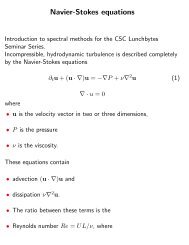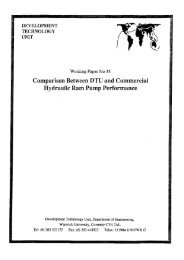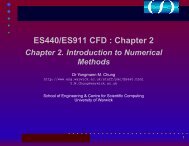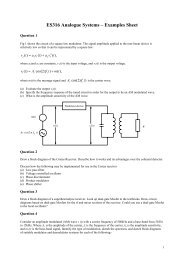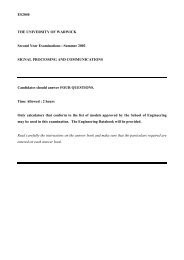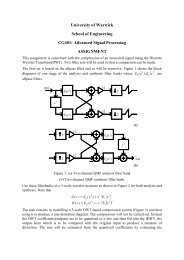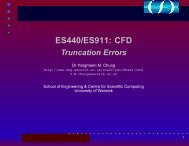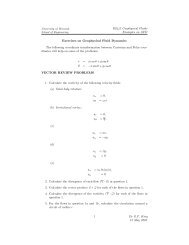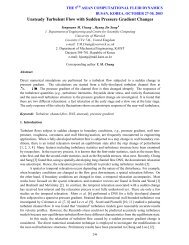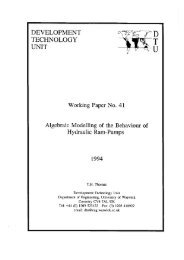Abstracts - KTH Mechanics
Abstracts - KTH Mechanics
Abstracts - KTH Mechanics
You also want an ePaper? Increase the reach of your titles
YUMPU automatically turns print PDFs into web optimized ePapers that Google loves.
ix<br />
Generation of magnetic fields by turbulent flows<br />
S. Fauve ∗ ,F.Pétrélis †<br />
The generation of a magnetic field by the flow of an electrically conducting fluid,<br />
i.e. the dynamo effect, has been first considered to explain the origin of the magnetic<br />
fields of planets, stars and galaxies. It has been also studied in relation with several<br />
applied problems such as liquid metal cooling of nuclear reactors, liquid metal<br />
electromagnets and instabilities in toroidal plasmas. Magnetic field generation by<br />
laminar flows is fairly well understood and dynamos generated by simple but clever<br />
flow geometries have been successfully observed in experiments performed a few years<br />
ago in Karlsruhe and Riga.<br />
However, the effect of turbulence on dynamo threshold and saturation still involves<br />
many open problems. We have shown that small scale turbulent fluctuations<br />
only slightly modify the dynamo threshold predicted as if the mean flow were acting<br />
alone, in agreement with the Karlsrhue and Riga experimental observations 1 . On<br />
the contrary, large scale fluctuations of eddies generating the field can strongly inhibit<br />
the dynamo effect, as shown in an analytically tractable example. Thus, the<br />
behaviour of the dynamo threshold of strongly turbulent flows as a function of the kinetic<br />
Reynolds number, is still an open problem involving many conflicting statements<br />
in the literature.<br />
The nonlinearly saturated dynamo regime also depends on the Reynolds number<br />
of the flow generating the magnetic field. We show that different scaling laws can<br />
be obtained for the magnetic energy generated in the vicinity of the threshold 2 and<br />
compare them to the values measured in Karlsruhe and Riga. The importance of<br />
the Coriolis force, crucial for astrophysical or geophysical dynamos, is also shortly<br />
discussed.<br />
Dynamos generated by strongly turbulent flows of liquid metal as well as astrophysical<br />
or geophysical dynamos, cannot be studied with direct numerical simulations<br />
of the equations of magnetohydrodynamics in a realistic parameter range. Progress in<br />
this direction thus strongly relies on experimental observations and several groups in<br />
the world are trying to generate a turbulent dynamo 3 . We will shortly review these<br />
efforts and show how the study of fluctuations and transport of a magnetic field by<br />
the flow of a liquid metal can give insights in the relevant mechanisms of turbulent<br />
dynamos 4 5 .<br />
∗ Laboratoire de Physique Statistique, Ecole Normale Supérieure, 24 rue Lhomond 75005 Paris,<br />
France.<br />
† Laboratoire de Physique Statistique, Ecole Normale Supérieure, 24 rue Lhomond 75005 Paris,<br />
France.<br />
1 Fauve and Pétrélis, Peyresq Lectures on Nonlinear Phenomena, Ed. J-A Sepulchre, World<br />
Scientific 2, 1 (2003).<br />
2 Pétrélis and Fauve, Eur. Phys. J. B 22, 273 (2001).<br />
3 Fauve and Lathrop, Fluid Dynamics and Dynamos in Astrophysics and Geophysics, A. Soward<br />
et al., Eds. 393 (2005).<br />
4 Bourgoin et al., Phys. Fluids 14, 3046 (2002).<br />
5 Pétrélis et al., Phys. Rev. Lett. 90, 174501 (2003).



